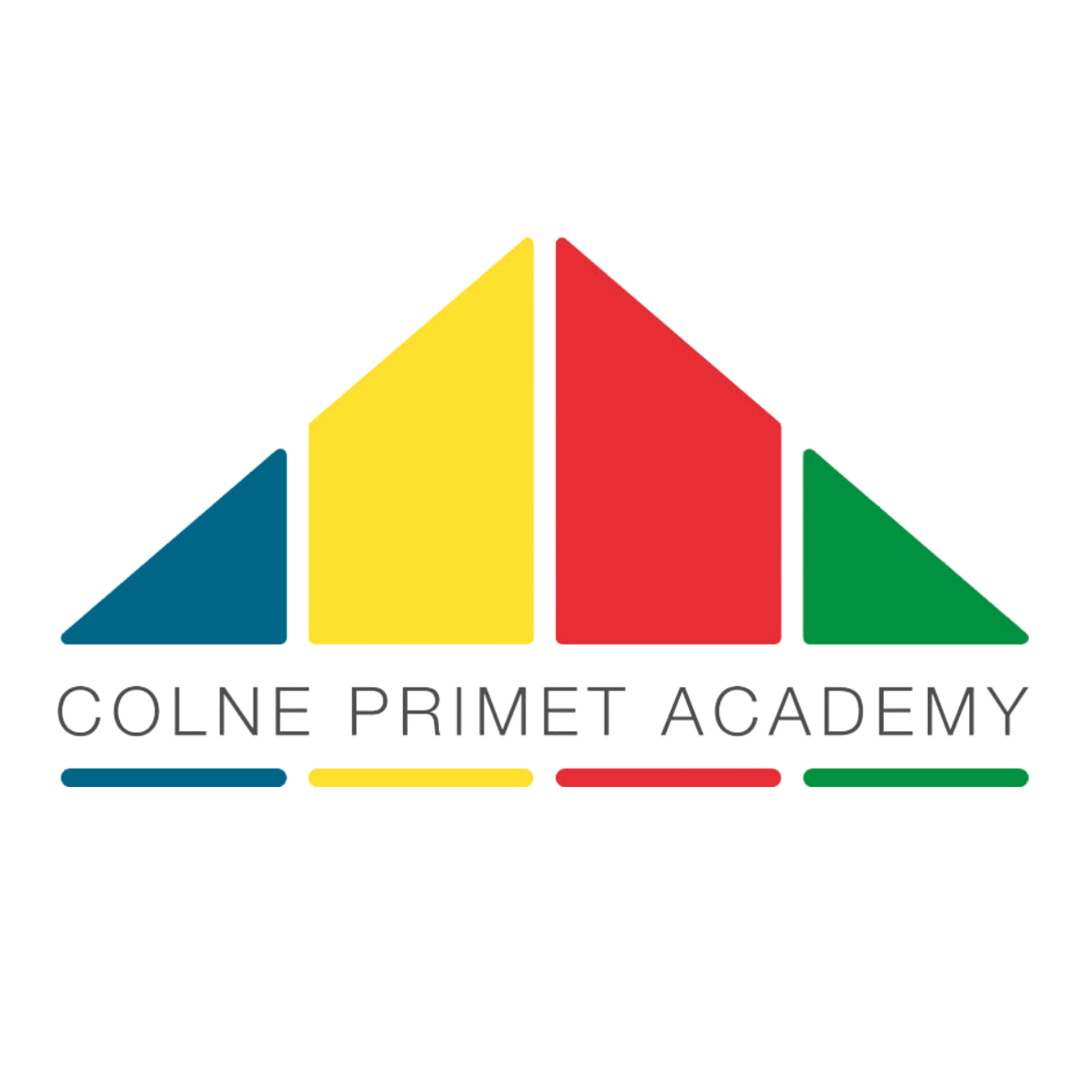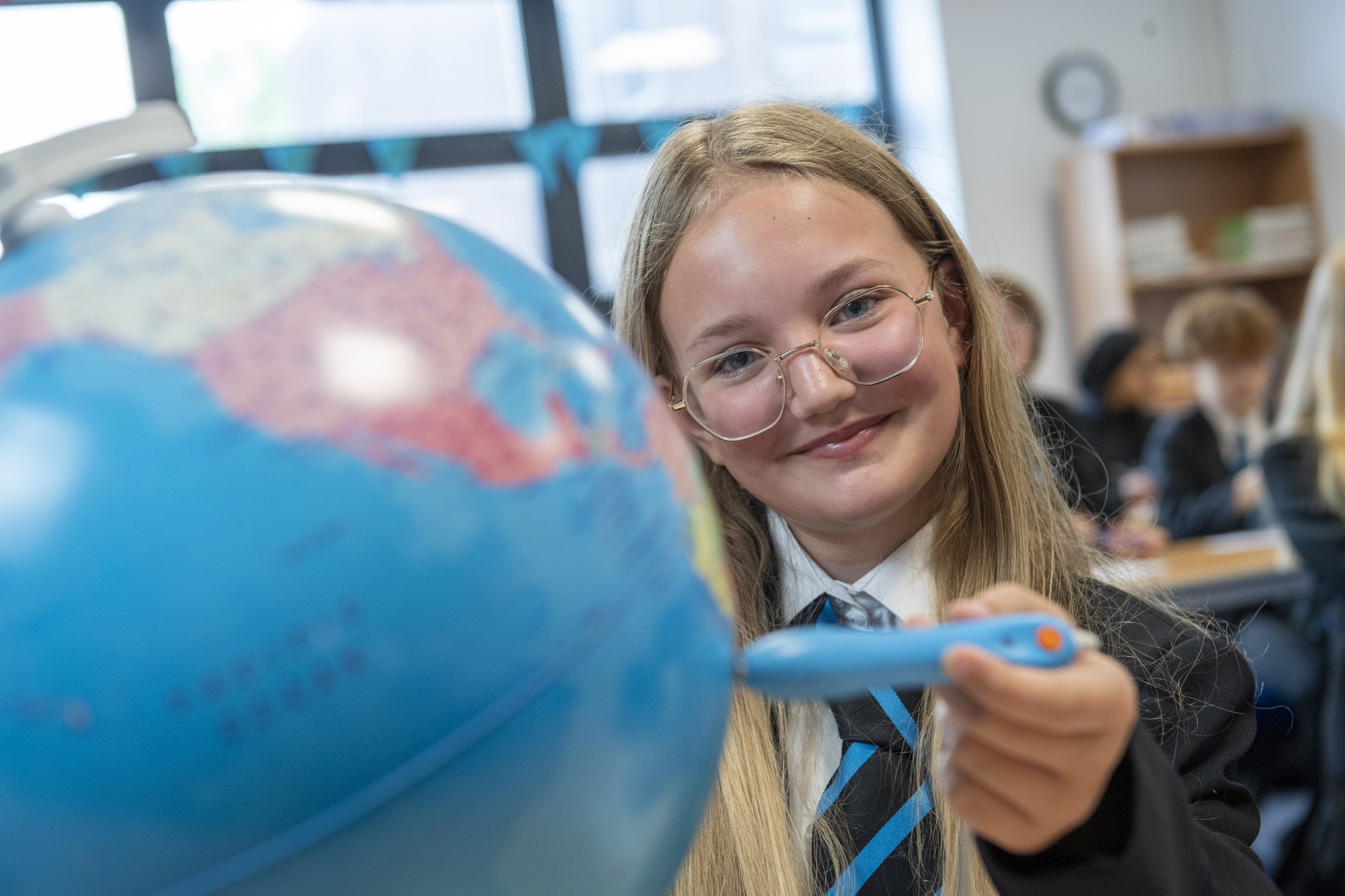
‘Proud to be PRIMET’
Spanish

Year 7
In Year 7, students develop a strong foundation in Spanish by exploring topics such as personal identity (name, age, birthday, where they live), physical and personality descriptions, family and pets, and school life—including subjects, opinions, teachers, routines, and uniform. The curriculum also encourages reflection on the value of learning languages and how language skills relate to future careers.
Grammar focuses on the present tense (first and third person), with key verbs like ser, tener, vivir, and gustar. Students are introduced to infinitives used after opinion phrases and modal verbs, and learn noun-adjective agreement alongside sentence-building tools like connectives, intensifiers, and time markers. Vocabulary is carefully sequenced and regularly revisited to support fluency and retention.
Phonics teaching is explicit and ongoing, helping students master Spanish pronunciation patterns such as vowels, j, ll, z, and ce/ci. This strengthens their reading and speaking skills.
By the end of the year, students will be able to write structured paragraphs in the present tense describing themselves and others, give opinions, and discuss familiar topics. Speaking activities focus on short conversations to build confidence and accuracy, supported by pair work and retrieval practice. Reading aloud is practiced to improve pronunciation, while listening and reading comprehension tasks develop skills in understanding short texts using context clues and key vocabulary.
Year 8
In Year 8, students begin learning Spanish, building on the language-learning foundations developed through French in Year 7. They explore a range of engaging topics such as school life (subjects, teachers, uniform, and rules), hobbies and free time (sports, weather, weekend plans), and their town (places, activities, and improvements). Cultural awareness is developed through comparison with Spanish-speaking contexts. Vocabulary is sequenced and regularly revisited to support retention and fluency. Phonics is explicitly taught and revisited to support accurate pronunciation and reading, helping students to decode new words and read with confidence.
Students develop core grammatical knowledge with a focus on the present tense (first person) and are introduced to the near future tense to express future plans. They continue working with high-frequency verbs such as ser, tener, vivir, gustar, and suelo, and learn how to use infinitives after opinion phrases and modal verbs. Students apply noun-adjective agreement in context and build more varied sentence structures using time markers, connectives, and intensifiers. The preterite tense (first person) is taught in the context of past events, allowing students to confidently talk about activities in the past.
Speaking activities focus on short conversations to build confidence and accuracy, supported by pair work and retrieval practice. Reading aloud is practiced to improve pronunciation, while listening and reading comprehension tasks develop skills in understanding short texts using context clues and key vocabulary. Writing develops through scaffolded tasks and model texts, leading to extended pieces that draw together vocabulary and structures from across the year.
Year 9
In Year 9, students explore a wide range of engaging topics across three main themes: media and entertainment, holidays, and future plans. They begin the year learning how to describe and give opinions on music, TV, and film, using comparatives and superlatives. They also recap how to describe people and use this to talk about favourite celebrities and past events such as concerts. In the spring term, the focus moves to holidays, where students learn how to describe where they go, what they do, and how they travel using a range of tenses. In the summer term, students study jobs, chores, money, and aspirations. Vocabulary is sequenced and revisited regularly to build fluency, and phonics continue to be taught explicitly to support accurate pronunciation and confident reading.
Students strengthen their grammatical knowledge by developing greater control of the present, preterite, and near future tenses, including regular and irregular verbs across all three conjugations. Students combine multiple tenses in writing and speaking with increasing accuracy. They continue to build more complex sentences using a wide range of connectives, intensifiers, time markers, and opinion phrases.
Speaking, listening, reading, and writing skills are developed through regular practice, scaffolded tasks, and model texts. Students hold short conversations, express opinions, and respond in different tenses. They produce extended writing with a clear structure and increased grammatical accuracy. Reading and listening tasks are designed to develop comprehension through increasingly detailed and challenging texts, with a focus on identifying key vocabulary, structures, and verb tenses. Reading aloud continues to support pronunciation, fluency, and decoding skills.
Year 10
In Year 10, students begin the GCSE Spanish course, exploring engaging and relevant topics such as identity, free time, festivals, holidays, school, family life, health, and technology. They learn to describe their own experiences and express personal opinions while also developing cultural awareness of the Spanish-speaking world. Vocabulary is sequenced and regularly revisited to support retention and fluency, and phonics continues to be taught explicitly to build accurate pronunciation and confident reading.
Students expand their grammatical knowledge to include the present, preterite, near future, and imperfect tenses, and are introduced to the simple future and conditional for expressing plans and hypothetical ideas. They also use more complex structures such as direct object pronouns, reflexive verbs, comparatives, possessive adjectives, and si clauses. Throughout the year, students practise combining multiple tenses to develop more fluent and natural communication.
All four language skills—listening, reading, speaking, and writing—are developed in line with the GCSE assessment structure, where each is equally weighted at 25%. Students also build their translation skills, working from English into Spanish and vice versa, reinforcing grammatical accuracy and vocabulary recall. In speaking, students practise photo descriptions, role plays, and general conversations, while in writing, they learn to produce extended responses with increasing independence. Reading and listening tasks develop students’ ability to understand longer, more complex texts, identify different tenses, and infer meaning. Phonics and decoding strategies continue to be reinforced to support reading confidence and overall literacy.
Year 11
In Year 11, students build on their learning from Year 10 to complete the GCSE Spanish course. They deepen their understanding of key topics such as food and drink, daily routine, local area, global issues, future plans, education, and employment. Lessons continue to develop students’ ability to describe experiences, give and justify opinions, and explore wider social and environmental issues relevant to life in both Spanish-speaking countries and their own communities.
Grammatical knowledge is extended through regular use of the present, preterite, imperfect, near future, simple future, and conditional tenses. Students also consolidate and apply complex structures such as reflexive verbs, object pronouns, comparatives, superlatives, and si clauses to communicate ideas more accurately and confidently across different time frames.
All four language skills—listening, reading, speaking, and writing—continue to be developed and practised in line with the GCSE assessment model, with each skill contributing equally to students’ final grade. Translation remains a key focus, with students translating both into and from Spanish to reinforce grammar and vocabulary recall. In speaking, students practise role plays, photo cards, and general conversation questions across all themes. In writing, they produce longer, structured answers using a wide range of language. Reading and listening activities help students tackle more challenging texts, identify tense and tone, and develop strong decoding strategies that support both Spanish and broader literacy skills.
If you would like any more information about our Spanish curriculum, please contact Mr B Adam, Head of Humanities and MFL, by emailing badams@colneprimet.co.uk, filling in the form on our contact us page or phoning the main office to arrange a call back.
